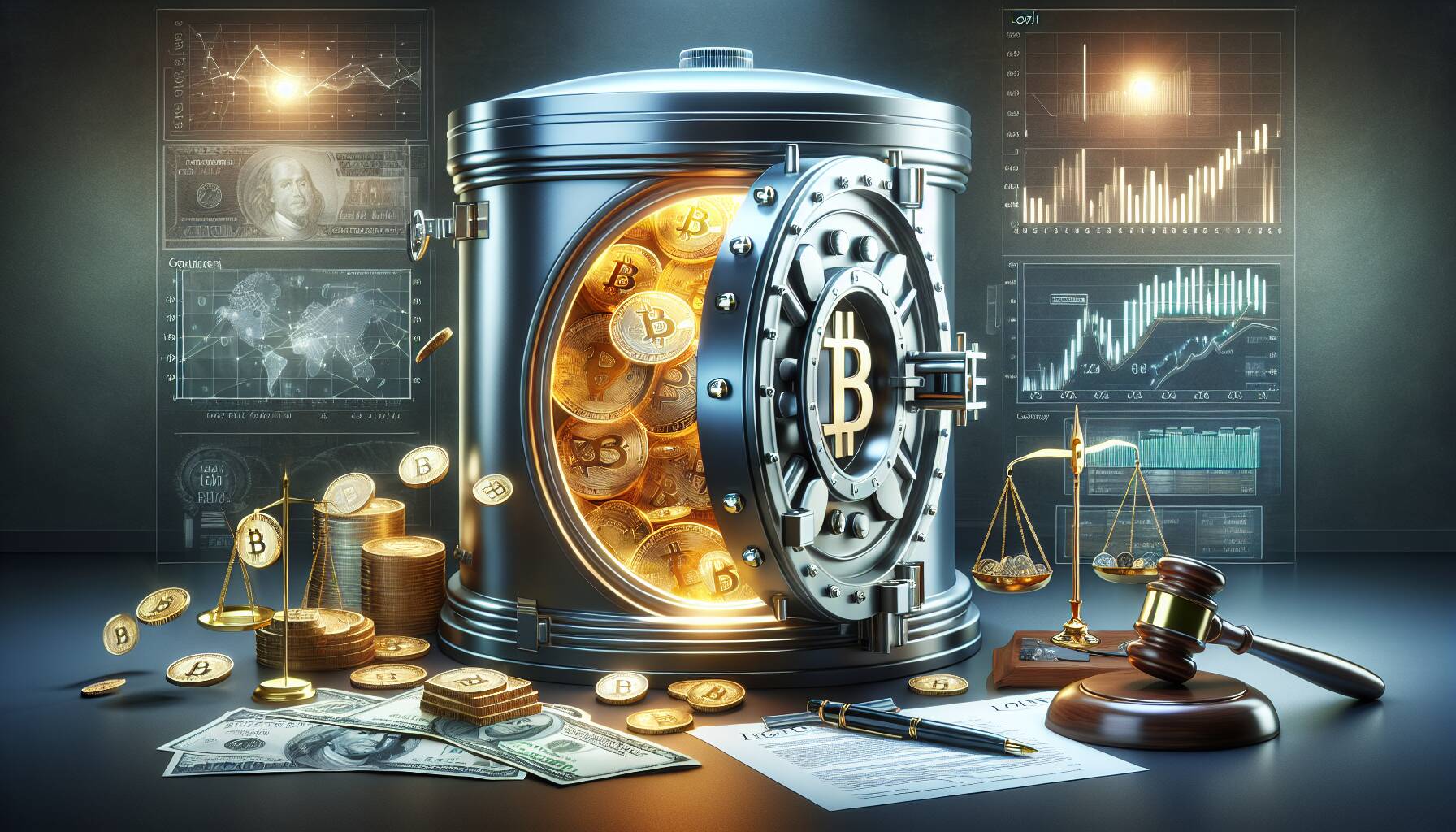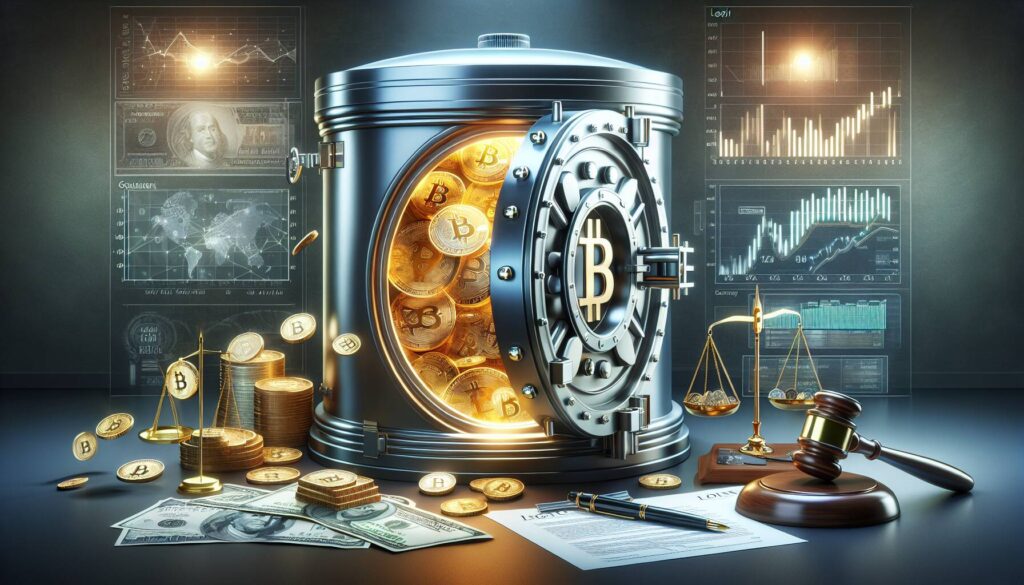In a significant move for the cryptocurrency landscape, U.S. President Donald Trump recently signed an executive order to establish a strategic bitcoin (BTC) reserve. This reserve will specifically include bitcoins seized by the U.S. government through law enforcement actions. David Sacks, a prominent figure in the White House’s cryptocurrency and AI initiatives, noted on X that this stockpile may also encompass other coins forfeited in criminal or civil cases, all while clarifying that taxpayer money will not be used to purchase these assets.
Currently, the U.S. government is reported to hold an impressive 198,000 bitcoins, valued at approximately .3 billion. By designating these holdings as a reserve, the U.S. effectively removes a substantial amount of selling pressure from the market. However, the response from investors has been mixed, with bitcoin recently showing disappointing trends, dipping to lows near ,700 before rebounding to around ,600 as hopes rise for favorable crypto tax policies to be announced at an upcoming White House crypto summit.
“The Executive Order has disappointed some investors,” stated Valentin Fournier from BRN, “as it explicitly states that the government will not acquire additional assets beyond those obtained through forfeitures.”
This initial letdown stemmed from the absence of a defined strategy for new acquisitions. Yet, with Commerce Secretary Howard Lutnick authorized to develop a budget-neutral strategy for potential BTC purchases, some market experts believe this points to a possible more extensive accumulation effort by the U.S. government. Dick Lo, CEO of TDX Strategies, noted that while investors had high hopes for the announcement, it is essential to assess these developments as a clear indication that BTC and other cryptocurrencies are being treated distinctly.
Industry analysts are keeping a close eye on upcoming announcements from the Crypto Summit, especially regarding potential new tax incentives for cryptocurrencies. Andrew O’Neill, a managing director at S&P Global Ratings, emphasized the symbolic significance of the order, as it officially recognizes bitcoin as a reserve asset for the U.S., albeit tied strictly to existing government holdings rather than new acquisitions.
As reactions from experts continue to emerge, the crypto market remains in a state of flux, with traders recalibrating their expectations following the executive order. Jeff Anderson from STS Digital indicated a shift in market sentiment, noting a reduction in implied volatility, reflecting growing uncertainty about future government activity in the cryptocurrency space.

Strategic Bitcoin Reserve Establishment by U.S. Government
Key points regarding the executive order signed by President Trump on establishing a bitcoin reserve:
- Executive Order Signed:
- The U.S. government will establish a strategic bitcoin reserve including BTC seized through law enforcement.
- Other coins forfeited in criminal or civil actions will also be included.
- No taxpayer money will be used to acquire bitcoin or other cryptocurrencies.
- Current Bitcoin Holdings:
- The U.S. government holds approximately 198,000 bitcoins, valued at around .3 billion.
- This reserve could potentially reduce selling pressure on the bitcoin market by over billion.
- Market Reactions:
- Bitcoin’s price initially declined to about ,700 due to investor disappointment.
- Prices have started to recover, reaching ,600, with hopes for favorable tax policies influencing investor sentiment.
- Experts’ Opinions:
- Valentin Fournier noted disappointment due to the lack of a clear acquisition plan, leading to a decline in several cryptocurrencies.
- Commerce Secretary Howard Lutnick has been tasked with acquiring additional Bitcoin in a way that does not increase budget costs.
- Dick Lo highlighted the unrealistic expectations of further purchases without a clear funding strategy.
- Andrew O’Neill emphasized the symbolic significance of bitcoin being recognized as a reserve asset, while noting the executive order’s limitations on additional acquisitions.
- Future Implications:
- Further announcements from the upcoming Crypto Summit could include more favorable tax treatment for cryptocurrencies.
- Market analysts are recalibrating expectations now that active government purchases of BTC are not anticipated.
The establishment of a bitcoin reserve may influence market dynamics, investor perceptions, and regulatory attitudes towards cryptocurrency, creating a significant potential impact on individual investment strategies and market stability.
Analyzing the Impact of the U.S. Strategic Bitcoin Reserve Executive Order
The recent executive order by President Trump aimed at establishing a strategic bitcoin reserve has elicited a wave of reactions from the crypto community and market analysts. Certainly, this is a significant moment, as it marks the U.S. government’s formal recognition of bitcoin as a reserve asset. However, the excitement is tempered by the nuances surrounding the execution of this strategy.
Competitive Advantages: On the positive front, the executive order effectively eliminates over billion in selling pressure from the bitcoin market, which can be viewed as a stabilizing factor for BTC values. Furthermore, the designation of bitcoin as a reserve asset solidifies its legitimacy in the financial landscape, potentially leading to greater institutional investment and mainstream adoption. This executive order could serve as a foundation for more comprehensive and favorable regulatory frameworks, especially if subsequent announcements from the upcoming Crypto Summit hint at tax incentives or other supportive policies.
Competitive Disadvantages: However, there’s a noticeable cloud of disappointment in the air, particularly due to the lack of a clear roadmap for acquiring new bitcoin assets. By explicitly stating that no taxpayer money will be used for purchases beyond existing holdings from forfeitures, the order limits investor expectations and has led to a minor market downturn immediately following the announcement. Moreover, the distinct separation between bitcoin and other cryptocurrencies may foster a divide within the crypto community, which could create unrest among holders of altcoins who feel sidelined in favor of BTC alone.
This news may primarily benefit institutional investors who view this executive order as a positive signal, solidifying bitcoin’s status as a reserve asset. However, it could generate problems for smaller retail investors who might feel hesitant amid the mixed signals surrounding future U.S. government actions in crypto. There’s also a potential downside for the market’s volatility, as seasoned traders adjust their expectations based on non-acquisition of new bitcoins, leading to potential price fluctuations based on sentiment rather than fundamentals.
In summary, as the market continues to evolve with this executive order in play, the implications reach far beyond mere policy. The strategic choices made by government officials now hold considerable power over both market dynamics and investor psychology in an increasingly digital economy.

















